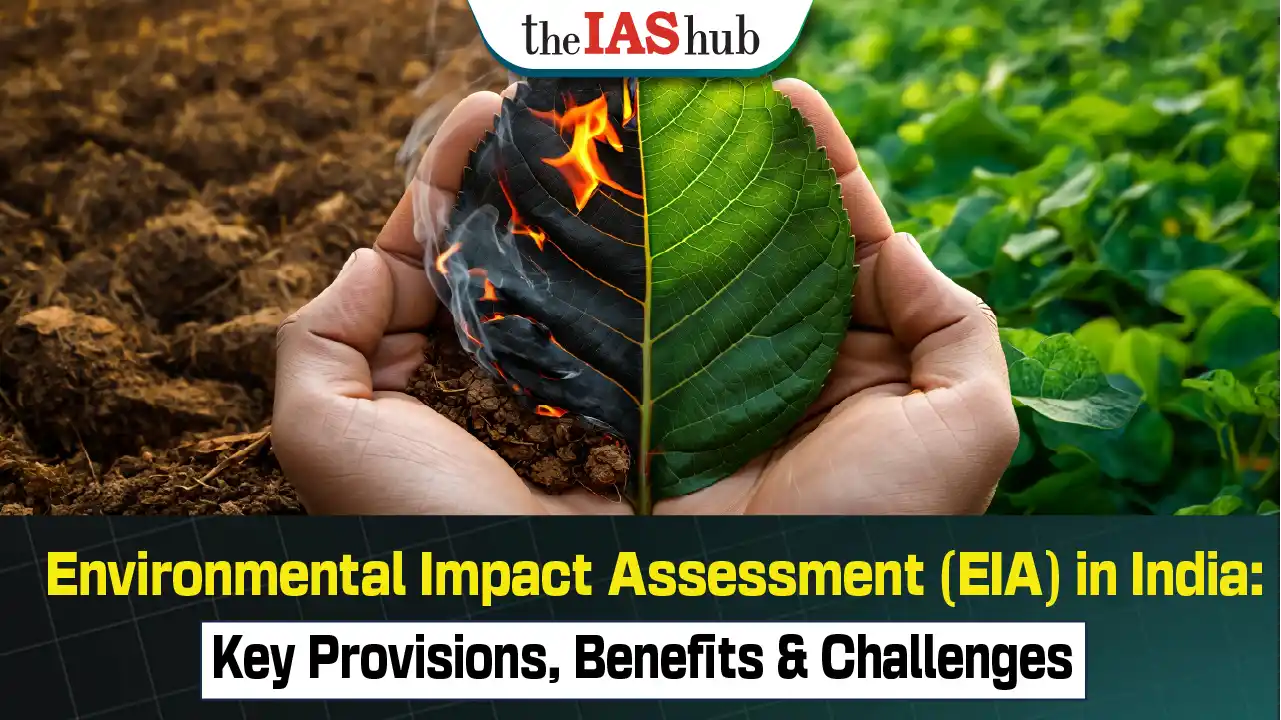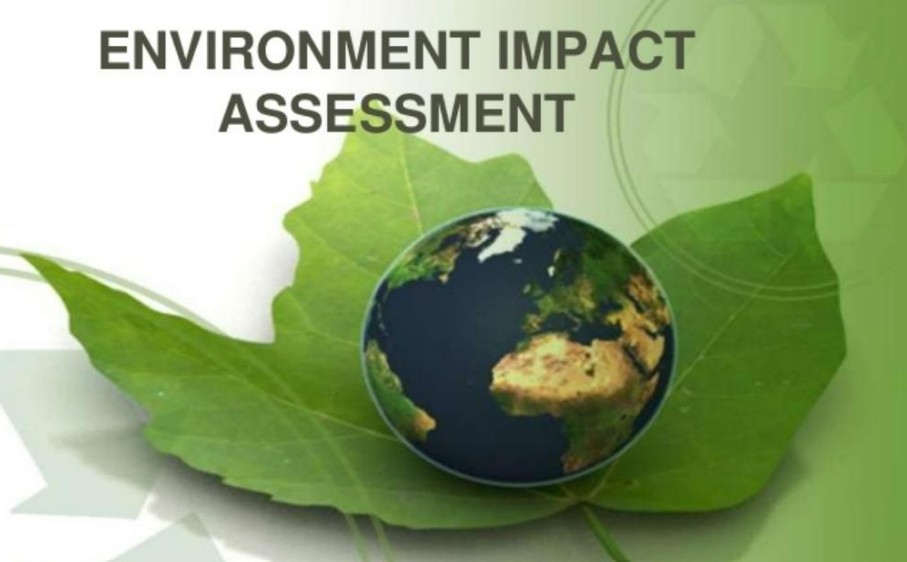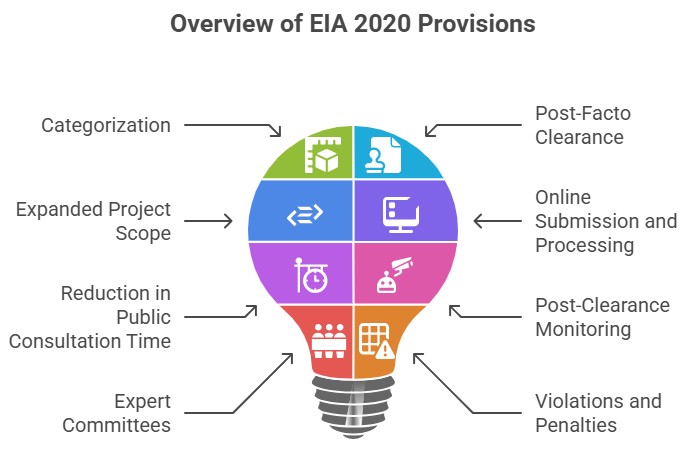Explore India's Environmental Impact Assessment (EIA)—its 2020 updates, benefits, challenges, and way forward. Learn how EIA supports sustainable development, public participation, legal compliance, and environmental protection in India.


Environmental Impact Assessment (EIA) is a comprehensive approach employed to scrutinize and assess the probable consequences, both favourable and detrimental, that a proposed project or development may exert on the environment, economy, and society.


Recent Updates:
Key Differences Between EIA Rules, 2020 and EIA Notification, 2006:
|
Aspect |
EIA Rules, 2020 |
EIA Notification, 2006 |
|
Applicability |
Applicable to all projects |
Applicable to projects falling under specific categories |
|
Project Categories |
Includes a wider range of projects |
Limited categories of projects covered |
|
Screening Process |
Categorization based on thresholds and parameters |
Categorization based on size and capacity |
|
Public Consultation |
Extensive public consultation requirements |
Less emphasis on public consultation |
|
Timeline |
Streamlined process with reduced timelines |
Longer timelines for obtaining environmental clearance |
|
Expert Committees |
Reconstitution of expert committees with defined roles |
Less defined guidelines for expert committee formation |
|
Post-Facto Clearance |
Restricted provision for post-facto clearance |
No specific provision for post-facto clearance |
|
Violations and Penalties |
Stringent provisions for violations and penalties |
Relatively lenient provisions |
|
Environmental Impact Assessment (EIA) Report |
Expanded scope and detailed requirements |
Relatively limited scope and requirements |
|
Monitoring and Compliance |
Strengthened provisions for monitoring and compliance |
Less emphasis on monitoring and compliance |
|
Public Disclosure |
Mandatory public disclosure of EIA reports |
Limited public disclosure requirements |
EIA has potential for sustainable development and environmental protection by incorporating robust measures, promoting public participation, and integrating scientific advancements to safeguard the environment and foster a balance between development and conservation.


Refine your answer writing skills and elevate your UPSC preparation with personalized support and expert feedback.
Fill out the form to get started with the program or any other enquiries !








Are you dreaming of becoming an IAS officer? Then, IAShub can be your best guide. It is one of the Best IAS Coaching in Delhi. Many students who want to clear the UPSC exam join IAShub for learning. The institute gives both online and offline classes. Their teachers are experienced and helpful. They easily explain every topic. Students also get notes, tests, and tips to do well in the exam.
IAShub is in Delhi and is trusted by many UPSC students. It offers coaching for every part of the UPSC exam – Prelims, Mains, and Interview. The classes are simple and easy to understand. The teachers are experts and guide students in the right way. IAShub is also known for its helpful notes, test series, and answer-writing practice. IAShub is the best coaching in Delhi and also gives UPSC Online Classes. This helps students from any place in India to learn. The online classes are live and also recorded. So, students can watch them anytime. These classes cover the full UPSC syllabus.
Here are some important services provided by IAShub:
The UPSC Civil Services Exam has three parts:
This exam is tough, but with the right guidance, it becomes easy to manage. Students must study smart and stay regular.
IAShub supports students from the beginning to the end. It gives the right books, tests, and notes. The classes are easy to follow, and the teachers are always ready to help. Students get personal doubt sessions too. The test series and answer checking help students learn where they need to do better. Also, free study materials save time and money.
IAShub also guides students during the final stage – the interview. Experts take mock interviews and give useful tips. This full support makes IAShub one of the best IAS coaching in Delhi.